
Contact

Home
H. J. McCooey part 5
Yowie / Bigfoot
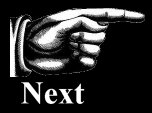
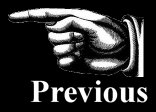

THE ECHIDNA—IMPORTANT SCIENTIFIC DISCOVERY.
Australian Town and Country Journal (NSW)
Date: October 24, 1885
Page Number: 29
It is announced editorially in the TOWN AND COUNTRY JORNAL of the 19th inst. that "there was excitement at the Museum, Sydney, Monday last, when it was seen that one of the echidnas there had laid an egg," and I admit that the occurrence was certainly of sufficient scientific importance to justify the excitement, but I wish to point out that I do not think that any scientific gentleman in the colony will dispute my claim that I am the first discoverer of echidna eggs in New South Wales, if not the first in Australia. On the 27th of last August, just 18 days before the egg was laid at the Sydney Museum, I dissected an echidna on the Merri Merri Creek, 35 miles west of Coonamble, and found therein fourteen or fifteen eggs varying from the size of small peas to No. 4 shot. This discovery, which I repeat is the first made in this colony, was immediately reported to Mr. Ramsay, and also to the Chairman of the Royal Society of New South Wales, Sydney. The following reply to my letter has been received from the hon. secretary :
"Sydney, September 9,1885.
"H. J. M'Cooey, Esq., Warren. Sir,—I have the honor to acknowledge the receipt of your letter dated the 6th instant, re discovery of echidna eggs in N.S.W., and beg to inform you that the same will be brought before the society at its next meeting (October 7). A. LEIBIUS, hon. sec., per W.H.W."
The eggs mentioned have been preserved in spirits of wine, and I will exhibit them to the Royal Society probably on the 4th of next November. But my discovery of the 27th ultimo, important as it undoubtedly is, sinks into secondary importance when compared with one of more recent date in connection with the echidna. I have subsequently discovered that the eggs of this animal (echidna hystrix) are laid in a state of immaturity, and with uncertain regularity, that they are taken into the pouch according as they are laid, carried about and matured and hatched therein. As I intend to contribute a paper to the Royal Society on this subject at an early date, a copy of which will be forwarded to the TOWN AND COUNTRY JOURNAL, I need not at this stage go into further particulars.
H. J. M'COOEY.
Coonamble, September 23.

THE LACE LIZARD.
Australian Town and Country Journal (NSW)
Date: October 31, 1885
Page Number: 29
Some few months ago when I stated that this lizard (Hydrosaurus varius) was not a true iguana, I surprised many who read up in naturalist subjects. The fact of my being flatly contradicted in any way, strange or surprising, came as matter of course. This is not the first surprise I have given budding naturalists, nor is it likely to be the last. If I had nothing new to write about I do not for a moment suppose I should be permitted to occupy so much space in the scientific columns of this the greatest and most popular of Australian journals. Then I am surprised, in turn, at times, mostly at the audacity of some critics. One writer, I notice, advised me to "look up natural history;" but jokes of this sort have got too thin. I am not a naturalist of yesterday, nor do I take up a subject to-day and drop it to-morrow. There is very little, I think, in natural history, that I did not "look up" years ago; and no one is better aware of these facts than the "Traveller" from Carcoar, who tendered me this funny little slip of advice. Another young bushman, signing himself "Cornstalk," told us that there was nothing like lace about this lizard, from which I infer that he is a "newchum" just landed on the shores of "our beautiful harbor," and has not yet behold one of these reptiles. A lady correspondent was particularly bitter on this subject, hurled the German language at my unhappy head, told me that a spoon was a "messer!" and consoled her wounded feelings with the reflection that in 200 years hence, when I would be "dead and gone," to use her own choice phraseology, and my name forgotten, that this lizard would still be called "a goanner." Now, it is highly probable that long before 200 years elapse I shall have returned to the universe from which I sprung, and it is even probable that the lace lizard will still retain the odious name "goanner," but I venture to think—and I have solid cogent reasons for so thinking—that even at that distance of time my name will not be forgotten, and I make bold to assert that even in five hundred years time, when in all probability Bob's Range will be as flat as an ash heap, my name will live in connection with scientific discovery in New South Wales. Let those who think this is an idle boast watch the transactions and reports of the Royal Society of New South Wales. In support, or in confirmation of my statement that Hydrosaurus varius is not an iguana, permit me Mr. Editor to quote from two standard works, taken at random. The "Guide to the Australian Museum" says:—"In the family of lizards found in other parts of the world may be noticed the common variable lace lizard (Hydrosaurus varius) commonly but erroneously called iguana—the true iguana being found only in South America." (Chap. 3, page 13.) From Tenison-Wood's "Natural History of New South Wales" I transcribe the following: "We have a very large tree lizard (Hydrosaurus varius), which hunts both on the ground and trees. It is called by various local names, which are corruptions of the word iguana, a genus of American lizard in no way conneoted with the Australian species." (Part II, page 31.) These quotations will probably be another surprise to young and old bushmen, who do not take the trouble to see what scientific men say of the subjects interesting to them.
September 20.
H. J. M'COOEY.
McCooey: "I make bold to assert that even in five hundred years time, when in all probability Bob's Range will be as flat as an ash
heap, my name will live in connection with scientific discovery in New South Wales."
Whoa!
More than one century
later, McCooey is barely remembered and only as the 19th century Naturalist who claimed to have personally seen the enigmatic
"Australian ape".
A WORD ABOUT LIZARDS.
Australian Town and Country Journal (NSW)
Date: November 21, 1885
Page Number: 33

THE DEATH ADDER.
Australian Town and Country Journal (NSW)
Date: November 28, 1885
Page Number: 29

AUSTRALIAN BIRDS. THE SPOTTED BOWER-BIRD (Chlamydodera maculata).
Australian Town and Country Journal (NSW)
Date: January 2, 1886
Page Number: 29

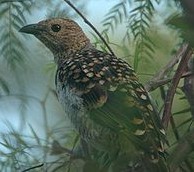

Mr. M'Cooey tells us that the lyre bird lays but one egg and builds a nest
on the top of the highest trees. Others, who profess to be well acquainted with the habits of these birds, say they lay two if not
more eggs, and build a nest with large sticks amongst rocks on the ground ; a nest similar to an eagle hawk's, only that the latter
builds on trees. We know that at one time Mr. M'Cooey was very positive about "those apes," and the probability that they ate birds'
eggs, as they could not got their ordinary food, fruit.
...
Mr.
M'Cooey said in his paper about bower-birds that they oould never be tamed or kept in a cage. I can show him one that has been in
a cage for two years, and it is very tame.
...
In perusing your journal of January 9 I saw a
letter by a "Bush Naturalist," where he says that Mr. M'Cooey says the lyre bird only lays one egg. This is quite correct, but Mr.
M'Cooey makes a mistake about the places where and how they build.
...
The birds build in low places, in the roots of a tree that has
been torn up with the wind, or in an opening between rocks, or in the top of a staghorn fern.
...
Readers of this department will regret to learn that ill health has prevented Mr. M'Cooey from continuing the papers he commenced
on the native birds. We trust that the illness is temporary only, and that ere long his lively and undoubtedly valuable contributions
to the Naturalist information of Australia will again appear in print.
THE BRUSH TURKEY.
Australian Town and Country Journal (NSW)
Date: February 27, 1886
Page Number: 25

...
To suppose the mother bird to arrive at the compost heap in which the eggs are hatched at the particular moment at which one of her young is about to break shell, and out of say 60 or 70 eggs deposited promiscuously by different birds at different times, selected her own, is to attempt to endow her with an instinct transcending human reason. This idea, then, must of necessity fall to the ground.
...
It is much regretted that Mr. M'Cooey cannot continue his able essays on Australian birds. I find
his statements with regard to the lyre bird very correct. I have found on several occasions eggs of these lyre birds in the butts
of old trees and in the cracks of large rocks ; but never found more than one egg in a nest. On one occasion I disturbed a lyre bird,
and caused it to fly from its nest, and on climbing the tree I found one egg and the shells of a former year's eggs.
...
As a matter of fact Mr. M'Cooey dislikes contradiction, and owing to his unkind replies to various contributors
on the iguana and other questions, few parsons care about trespassing upon the domain of the Australian naturaist. Notwithstanding
this, it behoves all persons, in the interests of science, who read essays which come within their province, to give a mild denial
to a palpable absurdity. From a gentleman who has traversed so much of this colony, one would not expect to be Horace Grooly'd with
that old tradition about brush turkeys laying from sixty to seventy eggs in one nest ; and in a future issue I shall expects Mr. M'Coooy
to give some tangible reasons for his bold assertion.
...


The same nesting site is frequently used year after year, with the old nests being added to each breeding season. The average clutch of eggs is between 16 and 24 large white eggs, which are laid September to March. Sometimes up to 50 eggs laid by several females may be found in a single mound. The eggs are placed in a circle roughly 60–80 cm down, 20–30 cm apart, always with the large end up. The newly hatched young dig themselves out of the mound and then have to care for themselves.
CONCERNING AUSTRALIAN SNAKES.
Australian Town and Country Journal (NSW)
Date: March 20, 1886
Page Number: 29

THE AUSTRALIAN BIRDS &c.
Australian Town and Country Journal (NSW)
Date: March 27, 1886
Page Number: 28


The Sydney Morning Herald (NSW)
Date: May 7, 1886
Page Number: 5
Ornate stone gecko
THE LYRE BIRD.
Australian Town and Country Journal (NSW)
Date: May 8, 1886
Page Number: 29

About three months ago a correspondent terming himself a "Cash Naturalist" stated that in my essay on the lyre bird I said that it built its nest on the highest of tree tops." I never made any such statement. The essay referred to appeared in the TOWN AND COUNTRY JOURNAL of the 17th of the same month, and can easily be found, and I will feel much indebted to any one who can point out any such statement. Indeed I thought that some of your correspondents who read the essay and understood it would call attention to the fact of my being misquoted, and save me the trouble of replying. Instead of this several writers fell into the same error, and began quite seriously to call in question my knowledge of the nidification of lyre birds. This is not the first time I have been misquoted and misunderstood. To misquote an author is not only unfair, but singularly illogical.
...
May 22, 1886 - NATURALIST NOTES FROM THE CLARENCE.
From your naturalist columns I gather that the "great native cat question" has
been settled in favor of Mr. M'Cooey's theory that they bring forth their young in the usual way.
...
GRASS PAROQUETS. I think Mr. M'Cooey
doubts the existence of these birds so far north as the Clarence. He can find plenty of them here on the heather-covered plains along
the seashore.
...
The term Grass Parakeet (or Grasskeet) refers to a large number of small Australian parakeets native to grasslands such as Neophema and Princess Parrot.

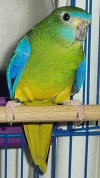

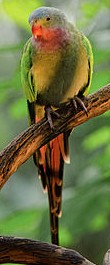

THE GARRULOUS HONEY-EATER.
Australian Town and Country Journal (NSW)
Date: May 22, 1886
Page Number: 29

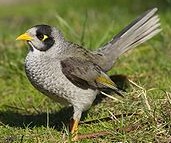

June 5, 1886 - HABITS OF THE BRUSH TURKEY.
...
When Mr. H. J. M'Cooey confines his remarks to his scientific knowledge, his articles
are more than interesting ; and we see by his last letter how easy it is to snuff a man out, who would tell us something startling
and altogether contary to the laws of nature.
...
CONCERNING AUSTRALIAN SNAKES.
Australian Town and Country Journal (NSW)
Date: June 5, 1886
Page Number: 28



























